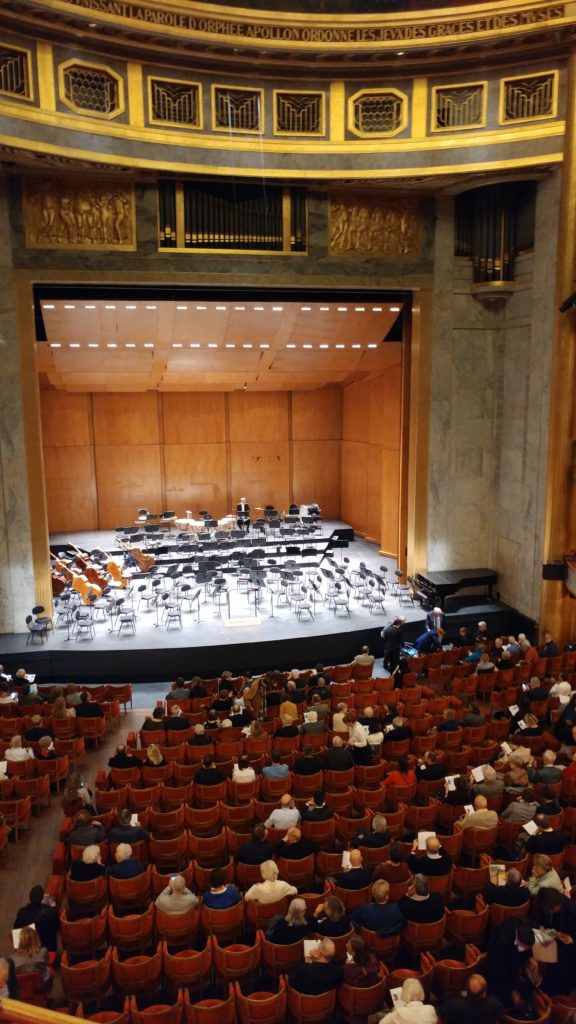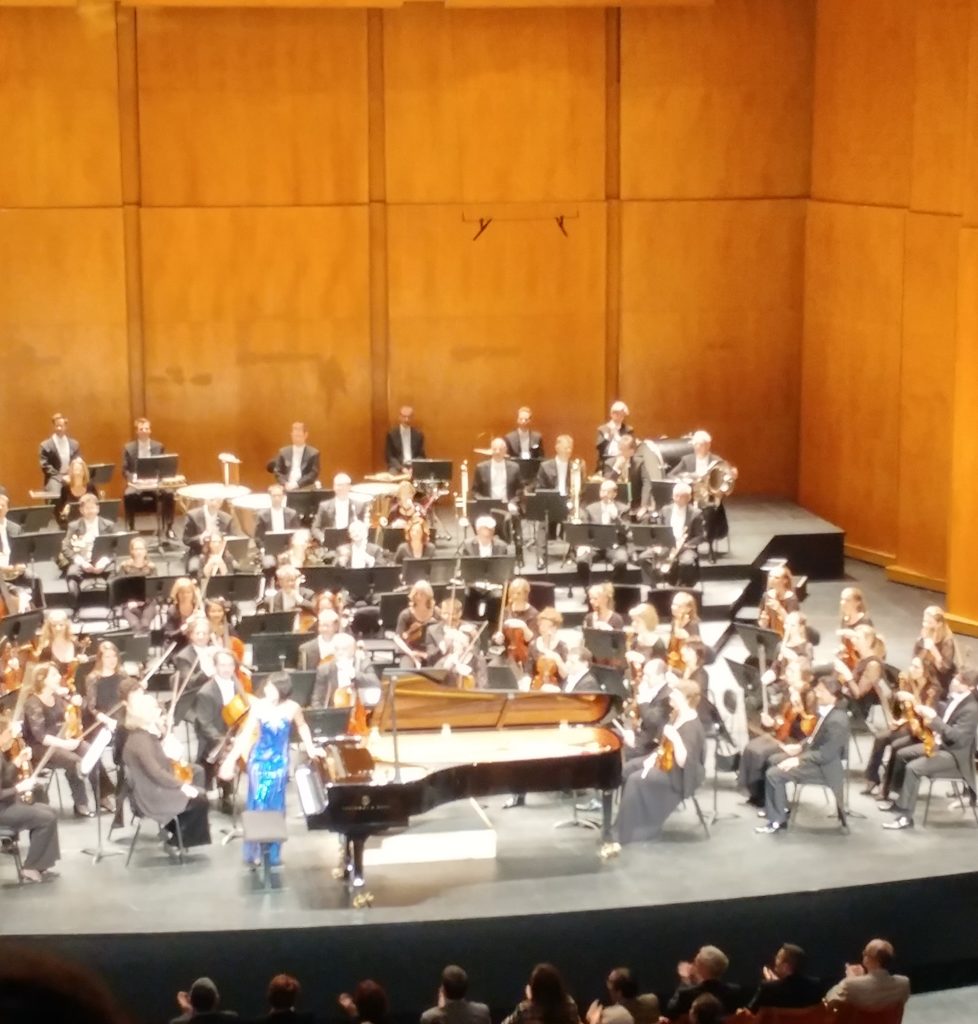Somewhere there’s music.
After spending the morning in the MusĂ©e d’Orsay, Pat and I settled in for lunch in the museum’s CafĂ© Compana – an Art Nouveau inspired space that serves generally light fare – soups, salads, pasta, and such. After lunch, we spent a bit more time exploring the museum before venturing outside. We had a few remaining free hours before we had to board the buses that would take us to our ship – the Amadeus Mozart – and we planned to use the time to wander about a bit in the neighborhood of the Orsay.
We crossed the passerelle (pedestrian bridge) into the Tuileries Garden which was at one time the private garden of Catherine de’ Medici. (She had it constructed in 1564 some five years after the death of her husband King Henri II.) Today, it’s a large public garden that runs parallel to the Seine between the Louvre and the Place de la Concorde.
As we sat quietly for a few minutes at the fountain near the western end of the Tuileries, I had some time to think that, planned or not, Jie’s decision to play a Debussy composition Wednesday afternoon meshed with our visit to the Orsay Thursday morning. You see, Impressionism wasn’t just a movement applied to painters, it was also applied to music and Debussy is often heralded as the first Impressionist composer. Although he personally rejected the classification, it’s apparent that the general aesthetic attitudes of Impressionist painters influenced him even if he made neither conscious nor deliberate attempts to compose using musical techniques that would have been analogous to painting techniques.
Technically, an impressionist composer would apply a static use of harmony, an ambiguous tonality, a lack of sharp formal contrasts or onward rhythmic drive, and a blurring of the distinction between melody and accompaniment. Debussy’s compositional style and approach evolved throughout his life and few would classify his later works as Impressionist. For comparison, some music historians have placed his composition Voiles (Clouds)
that was composed within a year or so of Footsteps in the Snow within the Impressionist canon. I will leave it to you to decide whether that description should apply to the latter.
When we’d had enough of the Tuilleries, we crossed back to the Left Bank and walked through some of the immediate neighborhood the Orsay doing little more than drinking in the Parisian atmosphere and experience until it was time to board the buses to transfer to the ship. Our initial shipboard activities were to check-in, practice the emergency drill, and out of necessity eat an early buffet dinner. We needed this particular informality because Fred, Amy, and Ellie (our host and the two trip coordinators from Minnesota Public Radio) had managed to badger the folks at Earthbound Expeditions (the tour operator) to procure seats for our entire group at the Theatre des Champs-ÉlysĂ©es to see a concert by the Rotterdam Philharmonic that, considered together with Amsterdam’s Concertgebouw Orchestra, is one of the two Dutch orchestras with prominent international standing.
The night’s conductor, Yannick NĂ©zet-SĂ©guin, is making something of a farewell tour as Rotterdam’s Principal Conductor. Only 42 years old, he has served in this capacity since 2006. He was originally slated to become the musical director of the Metropolitan Opera in New York for its 2020-2021 season. However, since the Met cut its ties with James Levine, NĂ©zet-SĂ©guin will assume the directorship when the Met opens its new season on 24 September 2018.
In addition to seeing this talented young conductor, we would also have the opportunity to see a performance by guest pianist Yuja Wang. The program for the evening included Symphony Number 49 by Haydn, Rachmaninov’s Concerto for Piano and Orchestra Number 4, and Symphony Number 4 by Tchaikovsky. Wang, of course, would be featured on the Rachmaninov. (And how pleased I was that we’d have a change from Rachmaninov’s Second which sometimes seems to be the default choice. Of course, I have a recording of Yuja Wang playing Rachmaninov’s second paired with the Rhapsody on a Theme of Paganini. I also have an exciting recording of her playing the Rachmaminov Third and Prokofiev Second with Gustavo Dudamel.)
NĂ©zet-SĂ©guin leads his orchestra with energy, intensity, and a commanding stage presence. Wang, who is known for flamboyant choices of clothing that match her skill and artistry,
has a similar impact. (Note: I used my phone to take the pictures at the concert and it’s clear that I’m not comfortable using that function. My apologies.)
The performances were transporting. Wang was called back for three encores and the orchestra for two.Â
Afterward, it was back to the boat. In the morning we will awake in Conflans-Sainte-Honorine. Although this town is only about 25 kilometers northwest of Paris as the crow flies, it is a considerably longer trip along the snakelike meanders of the Seine.
I hope to see you then.

